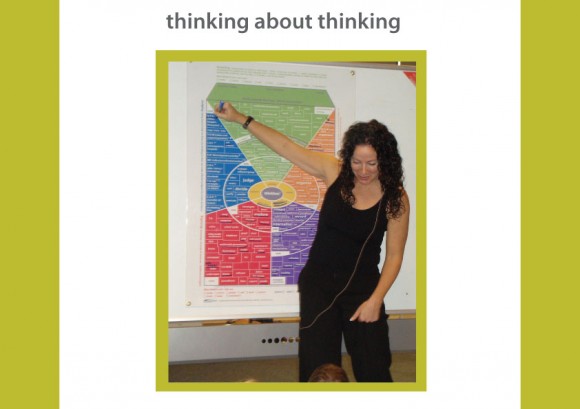
thinking about thinking
Thinking, we do it all the time … we can’t help but do it. It happens during math class and it happens during recess. From the moment we rise in the morning, until we go off to sleep at night, we think. We certainly don’t wait until ‘thinking time’ on Tuesday afternoon, and we don’t wait until we are offered a ‘thinking tool’ to assist us. If thinking is so natural, then why do we struggle to describe it, understand it, intelligently discuss it and address it explicitly with our learners? Why is it such an ethereal phenomenon?
The difficulty may rest with the ‘big push’ but ‘little support’ we have been offered in the area of thinking. Apart from Bloom’s Taxonomy very few frameworks have been provided to explain how thinking is developed. Very little has been suggested to challenge this widely accepted theory of thinking.
Those who have worked with me and those who have been immersed in my approach to teaching and learning, know my thoughts with regard to Bloom’s Taxonomy. But for those who are not familiar with either, I would like to take some time to share my thinking about thinking.
In contrast to widely held beliefs, I do not believe that thinking is hierarchical and that it occurs in ‘levels’. Instead, thinking occurs through a cyclical, adaptive process. Rather than addressing thinking in ‘levels’ – analysis is a lower level of thinking than evaluation – I would propose that there are simply ‘types of thinking’ that are inextricably linked. One type is not higher or lower than another. They are simply different.
Within any type of thinking, however, I do believe that there are degrees or levels of sophistication. For example, learners can know and understand at a superficial level or at a level of significant depth; learners can be thorough in their analyses and evaluations, or engage in this thinking at a surface level. Where creativity and innovation are concerned, learners can invent something new that might be considered a ‘near transfer’ – the invention of the white board marker; or they might invent or create what might be considered a ‘far transfer’ – the invention of a smart board pen. Both involve synthesis type thinking but to very differing degrees of sophistication.
Simply put – thinking is not hierarchical and it does not occur in ‘levels’. Instead, thinking occurs through a cyclical, adaptive process. Failure to understand this process comprehensively and deeply will have a significant impact on a teacher’s ability to design learning opportunities that truly promote a learner’s thinking and, subsequently, his learning.
I have prepared a digital presentation to assist in my demonstration of what I call, the Clark real thinking process, a conceptual framework that illustrates this idea of ‘types of thinking’ and ‘degrees or levels of thinking within different types’. It was also illustrate how I believe depth and breadth of thinking are developed and how far transfer of learning is realized. Once you have had an opportunity to review the digital representation, you can download the read more file for a more comprehensive explanation of the clark real thinking process.

Reply